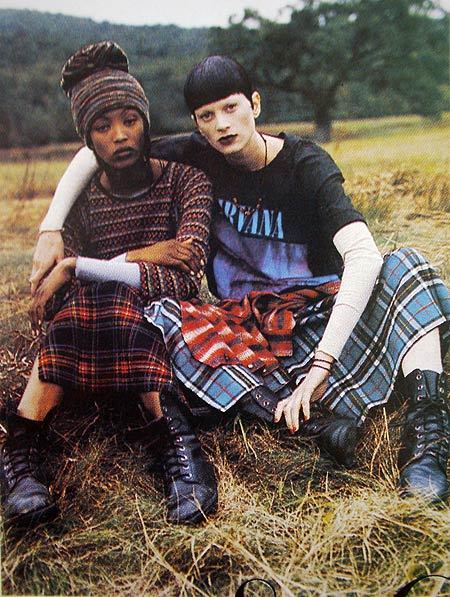
How did hipsters spring from grunge?
after grunge things reformed a little, more synthetic fibers, more proactive clothing and then hipsters were born
Hipsters are reformed versions of beatniks and the grunge generation. The 80s and 90s grunge generation were rebelling against their hippy gone perfect family parents, the media, and the war. The styles worn embodied the poverty and estheticism of period when grungers grew up. They wore an attitude more proudly than they did their clothes. “Screw Big Brother,” “I don’t care what you think,” and “Live Life as it Comes” seemed to be the majority of the attitudes. The grungers listened to generally nonmainstream music, and most likely smoked cigarettes, weed, or both. From the 90s grunge the newest version, hipster, is a twentieth century concoction of grunge attitudes and synthetic fibers. Originally, the hipster look was not hipster or trendy at all; adopted from the middle class, working man, who wore v-necks, torn jeans, and grungy shoes out of affordability, and dislike of corporations. This original hipster generation were the realists, people who struggled to make a living, and wore out of style, durable, and grungy clothes, because they frankly did not want to keep up with fashion. These realists would come back from work and crack open a cheap beer, such as PBR and smoke to escape the dread of routine. They were skeptics, and not popular. These men drank PBR to defy conforming to any standards. While this group of individuals lived life, wealthier youth started admiring them in self-pity. Douglas Haddow, in his article Hipster: The Dead End of Western Civilization, makes the connection of this
 wealthy infusion to the hipster look. He writes “in 2008, such things[PBR, v-necks etc.] have become shameless clichés of a class of individuals that seek to escape their own wealth and privilege by immersing themselves in the aesthetic of the working class” (2). Wealthy people bought similar designs at higher prices, and began to drink and smoke the same things adopting a fashion statement that the majority of them did not understand. Just as grunge became popularized and corrupt so did this new look. Haddow also provides a great description of the hipsters that arose from the imitation of the antisocial working class. He writes, “after punk was plasticized and hip hop lost its impetus for social change, all of the formerly dominant streams of "counter-culture" have merged together. Now, one mutating, trans-Atlantic melting pot of styles, tastes and behavior has come to define the generally indefinable idea of the ‘Hipster’” (1). Hipsters were a generation the started off as counterculture, individual, and unique.
wealthy infusion to the hipster look. He writes “in 2008, such things[PBR, v-necks etc.] have become shameless clichés of a class of individuals that seek to escape their own wealth and privilege by immersing themselves in the aesthetic of the working class” (2). Wealthy people bought similar designs at higher prices, and began to drink and smoke the same things adopting a fashion statement that the majority of them did not understand. Just as grunge became popularized and corrupt so did this new look. Haddow also provides a great description of the hipsters that arose from the imitation of the antisocial working class. He writes, “after punk was plasticized and hip hop lost its impetus for social change, all of the formerly dominant streams of "counter-culture" have merged together. Now, one mutating, trans-Atlantic melting pot of styles, tastes and behavior has come to define the generally indefinable idea of the ‘Hipster’” (1). Hipsters were a generation the started off as counterculture, individual, and unique.

No comments:
Post a Comment